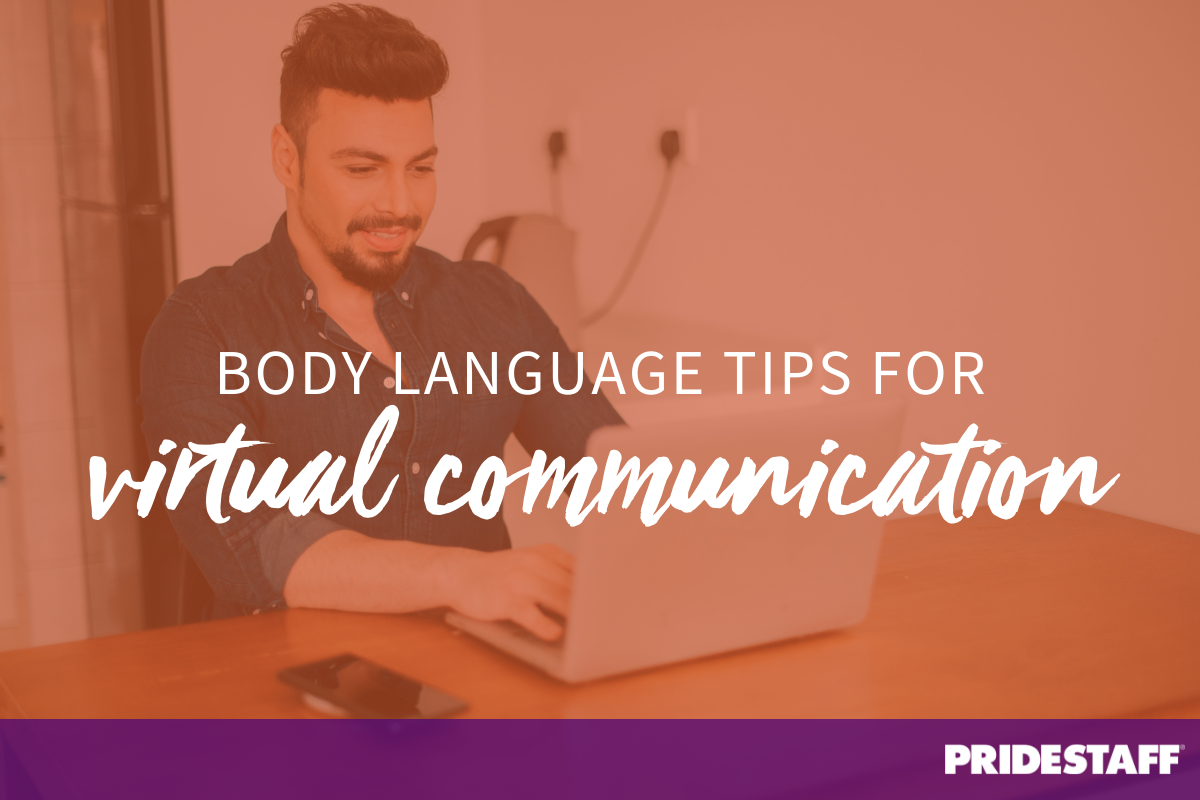3 Body Language Tips for Enhancing Your Virtual Communication Skills

Body language plays an essential role in communication. From posture to hand gestures to eye contact, the way you use your body has a huge impact on your words’ meaning.
So, what nonverbal messages are you sending while on camera?
Video conferencing technology is here to stay, and those who consciously strive to improve their body language skills will perform better in the workplace than those who don’t. Whether you’re preparing for a video interview or participating in virtual meetings as part of your job, use these tips to make a great impression and communicate more effectively:
Related content:
How to Sell Your Value in an Interview
3 Body Language Tips for Video Communications
1. Work through your nerves before you get on camera.
If speaking on camera heightens your anxiety, that stress may display itself through distracting nervous behaviors (like toe-tapping or fidgeting) – which can cause other participants to feel anxious too. To project an image of calm on camera, work out those nerves before you connect. Try taking a walk or performing deep breathing exercises to improve your composure. Both will help you appear more relaxed and in control while allowing you to be more fully present in the conversation.
2. Use gestures appropriately to reinforce what you say.
One of the best ways to support your verbal messages is by gesturing with your upper body. While aggressive finger-pointing or arm flailing isn’t recommended, research suggests that the following types of controlled gestures can enhance the meaning of your words:
- Emotional gestures reinforce your feelings. For example, clenched fists or rubbing your temples imply frustration, while rubbing the palms of your hands back and forth quickly can convey your excitement.
- Symbolic gestures such as a “thumbs up” are useful for reinforcing ideas, numbers, or other words.
- Try using descriptive gestures (such as using your hands to illustrate a shape) to communicate abstract concepts or movement better.
3. Maintain appropriate eye contact.
Making eye contact while using video is tough, because you need to look directly at the camera to simulate eye contact. Still, you need to look away from the camera to watch other participants. In the real world, a lack of eye contact can make you seem timid, insecure, or even dishonest – and a direct, unbroken stare can be interpreted as aggressive. So, strike the right balance by switching your gaze between the camera and the screen. Train yourself to look at the screen when others are talking, and then look right into the camera when it’s your turn to talk. Simulating this “natural” eye contact makes you appear approachable and engaged, while creating an atmosphere where everyone feels recognized and understood.
Learn more job interview nonverbal communication tips here.
Looking for your next job?
PrideStaff can help you get to work quickly. With more than 80 offices across the nation, we have a wide range of temporary, temp-to-hire, and direct hire opportunities available.
Get started today!
- Contact the PrideStaff office in your area.
- Search for great local job opportunities.
- Submit your resume.



